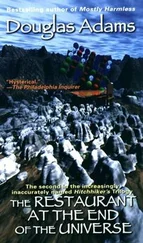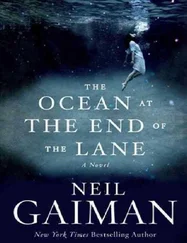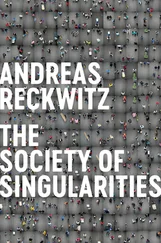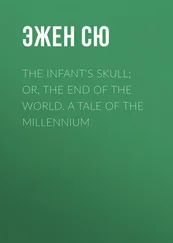In light of the complexity of this conflict situation, it is easy at first to fall back on Samuel Huntington’s thesis about the clash of cultures. His thesis is seductive, but ultimately it is far too simple. Of course, both within national societies and on the global level, these conflicts are often and undoubtedly about culture , and the question of culture is closely tied to that of identity . Moreover, it is also the case that, in today’s late-modern societies, culture is attributed a level of significance that can hardly be overestimated. It is astonishing how often and intensively questions of culture – from the issue of “parallel cultures” to that of the “dominant culture” – become heated topics in public debates. Contrary to Huntington’s thesis, however, these conflicts should be seen not as a simple clash of cultures but as something different: a conflict about culture – that is, a debate over what should be understood by culture and what place it should take. Instead of an antagonistic struggle between diverse cultures and their cultural patterns, what we are witnessing in late modernity – and this is my opening thesis – is a far more fundamental conflict between two opposed regimes of culturalization , as I would like to call them. This is not a matter of various cultural patterns facing one another; rather – and on an even more fundamental level – there are two oppositional understandings of what culture means in general, and, accordingly, there are two contrary formats in which culture is organized .
In late modernity, the culturalization of the social is taking place on a broad front, and this process has assumed two different forms. On one side – and here I am speaking of “Culturalization I” – we observe a culturalization of lifestyles in which individuals striving for self-development surround themselves with cultural set pieces from a mobile global market. This is a cosmopolitan understanding of culture that can be called hyperculture . On the other side, we are witness to a form of culturalization that is directed toward collectives and constructs them as moral, identity-based communities. This process – “Culturalization II” – operates on the basis of an inside–outside dualism, and it follows the model of homogeneous communities, which are created as “imagined communities.” The corresponding model of culture is that of cultural essentialism , and it can be found in many forms. Late modernity is characterized by an elementary conflict between these two regimes of culturalization.
The Culturalization of the Social
“Culturalization” may at first sound like a strange term. In sociology, we are familiar with a whole series of such terms that contain the ending - ization or - iation and thus suggest that something is increasing or intensifying: modern ization , rational ization , individual ization , different iation , and so on. In a comparable way, the term “culturalization” would then have to denote an extension of culture into areas where it had hitherto not existed. Yet what can that possibly mean in light of the apparent consensus that, to some extent, everything “is” culture, insofar as every human act can only become what it is against the backdrop of contexts and worlds of meaning? Despite this initial consideration, it is possible to furnish the concept of culturalization with social-theoretical significance so long as two important distinctions are kept in mind: first, the distinction between culture in a broad but weak sense, and culture in a narrow but strong sense; second, the distinction between rationalization and culturalization.
How is culture generally understood? And what is its place in modern society? Culture is certainly one of the most controversial and vibrant concepts in the humanities and social sciences. At the same time, the British sociologist Raymond Williams regarded it as a key concept of modernity that began to spread, not coincidentally, at the end of the eighteenth century – that is, with the rise of modernity itself. 2Culture has been defined in a number of entirely different ways. 3In early modernity, culture was understood as an eminent and especially distinguished individual way of life; only a few people, then, were thought to have culture – the nobility, the bourgeoisie, the ecclesiastical elite – whereas everyone else (the great majority of people) presumably lacked it. During the era of German Romanticism, alternatively, Herder defined culture as the way of life practiced by an entire people: “German culture” was thus conceived as being different from, say, Chinese culture. This understanding of culture as a group feature also seems to have been shared by Huntington. In contrast, culture can also be understood in a very narrow sense; such is the case, for instance, at ministries of culture, which tend to identify culture with the high culture of education, the arts, and perhaps also religion. Compared with the latter understanding, the cultural theorists of the twentieth century radically expanded the concept of culture. Ernst Cassirer, for instance, associated culture with the way in which the world is perceived – how it is interpreted in worldviews and everyday ideas – and with the meaning that is attributed to it. 4
This latter, broad cultural-theoretical understanding of culture is in many respects sensible and useful. Every praxis can thus be understood as culture by determining the definitions, concepts, distinctions, and interpretive presuppositions that are contained in it. Culture is not restricted to art and religion. Nature, gender, or technology also have a cultural dimension to the extent that they depend on social worlds of meaning that define and interpret nature, gender, or technology in a particular way. Nevertheless, in order to understand the role of culture in modernity, we also need, in addition to this broad and yet weak concept of the cultural, a narrow but strong concept of culture. In the broad cultural-theoretical understanding, everything is to some extent culture because meaning is everywhere at play. The narrow understanding, in contrast, sees culture only where value is at stake. 5This is my point of departure: culture and value are inextricably linked. In the sphere of culture, certain things are attributed value – they are laden with value, while other things are denied value. The sphere of culture is thus the dynamic social sphere in which one “valorizes” (assigns value) or “de-valorizes” (denies value). That which is valuable stands on one side, while that which is without value stands on the other. It is important to note that this is not a matter of individuals “having” values, such as those that are asked about in opinion surveys. The issue is rather that, in social processes, elements of the world are attributed or denied value; I am concerned here, in other words, with the highly dynamic and often controversial process of “doing value.” In this process, any number of things can become valuable, including works of art or certain individuals, gods or an ethical code, pop music or apartments in an old building, fashion, YouTube videos, or a nation’s legal constitution.
Every human society has its own sphere of culture, which means that they all have their own processes for assigning (or not assigning) value to certain things, spaces, events, groups, or subjects. This is also true of modern society, which emerged in the wake of the Enlightenment, industrialization, and the democratic revolutions at the end of the eighteenth century. For a long time, however, it seemed as though modernity’s cultural sphere played no more than a marginal role, and that it was far subordinate to the sphere of utility, functionality, and efficiency. This is because culture has a formidable adversary: (formal) rationality. If culture is the sphere of valorization and de-valorization, rationality is the sphere of practicality, neutral procedures, laws, and cognitive processes. This bifurcation is redolent of Émile Durkheim’s classical distinction between the sacred and the profane. 6The sphere of culture is concerned with large and small forms of the sacred, from God to objects of consumption, whereas the sphere of rationality is home to the profane – to objectivity, dispassion, and disenchantment. The positive and negative valorizations of culture involve strong emotions and affects, whereas rationality remains, in comparison, emotionally impoverished.
Читать дальше









